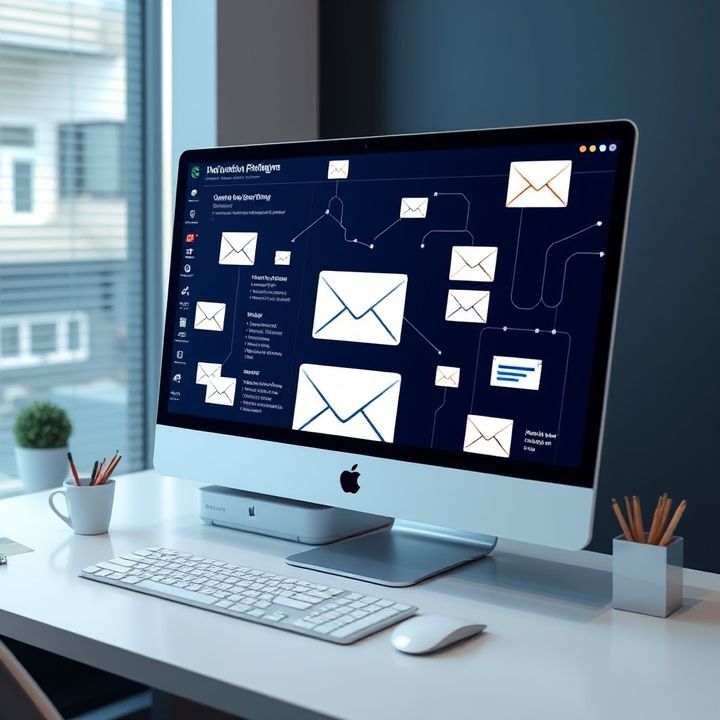Table of Contents
- Introduction
- Understanding and segmenting your audience demographics
- Crafting personalized content to cater to different personas
- Utilizing A/B testing to refine email elements for various groups
- Timing and frequency adjustments based on demographic preferences
- Incorporating cultural and regional nuances into email campaigns
- Conclusion
- Frequently Asked Questions
Introduction
Are your email campaigns lacking the spark needed to captivate your audience and drive unparalleled success? Unlocking the secret to a thriving email marketing campaign is not just about catchy subject lines or flashy graphics. It’s about diving deep into the core of your audience and employing hyper-targeted demographic strategies that speak directly to them. Imagine elevating your campaign’s potential by understanding exactly who makes up your audience and addressing their needs with precision.
In this article, we delve into expert-approved strategies for harnessing the power of demographic insights to transform your email marketing from lackluster to exceptional. But before we begin, let’s set the stage with some eye-opening statistics and insights:
| Demographic | Impact on Engagement |
|---|---|
| Age | Higher open rates with tailored content |
| Location | Improved conversion through localized offers |
| Interests | Enhanced click-through rates |
| Behavior | Boost in email responses |
To get you inspired, here’s a glimpse into the world of email marketing mastery:
So, are you ready to decode the intricacies of your target audience and take your email campaigns to the next level? Dive further into this article to uncover the strategies that will set your email marketing efforts apart from the competition.
Understanding and segmenting your audience demographics
Understanding and segmenting your audience demographics is a crucial strategy in optimizing email campaigns, as it allows marketers to tailor content specifically to the interests and needs of diverse groups. This process begins with gathering data on various demographic factors such as age, gender, location, income, education level, and more. By analyzing this information, businesses can identify patterns and preferences that help in creating targeted campaigns.
Segmentation involves dividing your email list into distinct categories based on these demographic characteristics. For example, younger demographics might respond better to dynamic content and visuals, while older populations might appreciate more detailed and text-rich emails. Additionally, regional differences can dictate language use, time zone considerations, and cultural nuances, which play a significant role in crafting effective messaging.
Once segments are established, marketers can customize their approach for each group, ensuring that the messaging resonates on a personal level. This improves engagement rates, open rates, and conversion rates, as recipients receive content that is relevant and valuable to them. By continuously monitoring and adjusting the segmentation strategy, businesses can refine their campaigns to better match the changing needs and behaviors of their audience.
Crafting personalized content to cater to different personas
Crafting personalized content to cater to different personas involves understanding the unique preferences, behaviors, and needs of each target demographic. The first step is to segment your audience based on various criteria such as age, gender, location, interests, and purchasing behavior. This allows you to create distinct personas that represent different subsets of your audience. Once these personas are established, tailor your email content to resonate with each group’s characteristics and preferences.
For instance, for a tech-savvy audience, use terminology and features that highlight innovation, while for a more traditional group, emphasize practicality and reliability. Personalization goes beyond just using the recipient’s name; it involves delivering content that aligns with their specific interests and needs. Subject lines, images, and call-to-action buttons should be designed to appeal directly to each persona. Furthermore, the timing and frequency of your emails can be adjusted to suit the habits of each group. By using data and insights to inform your strategies, you can create meaningful connections with your audience, increase engagement, and ultimately drive better results from your email campaigns.
Utilizing A/B testing to refine email elements for various groups
A/B testing is a critical strategy in optimizing email campaigns to effectively reach different target demographics or personas. By experimenting with various elements of an email, businesses can fine-tune their messaging to better resonate with diverse audiences. The process involves creating two variations of an email, known as the ‘A’ and ‘B’ versions, and sending them to smaller segments of your email list. This helps in identifying which version is more effective in achieving a desired outcome like higher open or click-through rates.
Key elements to test include subject lines, design layouts, call-to-action buttons, and personalized content. For instance, younger audiences might respond positively to dynamic visuals and casual language, whereas professionals may prefer concise, formal content with straightforward value propositions. Carefully analyzing A/B testing results helps marketers understand what drives engagement among different groups, allowing for data-driven decisions in crafting future campaigns. Moreover, continually refining email elements through testing ensures that campaigns stay relevant and maintain their effectiveness as preferences evolve. This strategic approach not only optimizes engagement rates but also enhances overall campaign success by aligning emails with the unique needs and preferences of each demographic group.
Timing and frequency adjustments based on demographic preferences
Optimizing email campaigns for different demographics requires careful adjustments to timing and frequency, critical components that can significantly influence engagement levels. Understanding demographic preferences allows marketers to tailor their outreach efforts effectively. Younger audiences, such as millennials, often prefer receiving communications during late mornings or early afternoons when their engagement levels peak. In contrast, older demographics, like baby boomers, may respond better to morning emails. Additionally, specific segments respond to emails less frequently, preferring weekly newsletters over daily updates, to avoid feeling overwhelmed. By using analytics tools to monitor open rates and click-through rates, marketers can discern preferences for each demographic, fine-tuning sending times and frequencies accordingly. This approach not only enhances open and engagement rates but also fosters a deeper connection with the audience by respecting their time and communication preferences. Tailoring email marketing strategies in this way ensures that messages reach the right audience at the ideal time, promoting higher levels of interaction and conversion.
Incorporating cultural and regional nuances into email campaigns
Incorporating cultural and regional nuances into email campaigns is crucial for building a strong connection with diverse audiences. Understanding the cultural context allows marketers to tailor messages that resonate more deeply with their audience. This involves considering language preferences, cultural values, traditions, and even regional holidays, which can influence purchasing behaviors and the effectiveness of an email campaign.
To start, segment your audience based on demographic and geographic data. This will enable you to customize your email content for specific groups. Language is a critical factor; emails should be crafted in the preferred language of the target audience, ensuring clarity and relevance. Additionally, paying attention to cultural symbols, imagery, and color palettes can further personalize the communication, making it feel more local and authentic.
It’s also important to consider local regulations and norms regarding communication. For instance, some cultures may prefer a formal tone, while others may appreciate a more casual or humorous approach. Lastly, being mindful of time zones and regional holidays can significantly impact engagement rates. By sending emails at the most opportune moments for each market, you enhance the likelihood of capturing your audience’s attention.
Conclusion
In conclusion, mastering the art of effective email campaigns requires a deep understanding of your target demographics and careful implementation of tailored strategies. By segmenting your audience based on comprehensive demographic data, you can create personalized content that resonates with diverse personas. Utilizing A/B testing plays a pivotal role in refining your emails, ensuring they align with the preferences of various groups. Additionally, adjusting the timing and frequency of your emails according to demographic preferences can significantly enhance engagement rates. Furthermore, incorporating cultural and regional nuances showcases your brand’s sensitivity and commitment to catering to a global audience. Ultimately, these strategies lead to stronger connections with your audience, improved engagement, and higher conversion rates. Keep analyzing and adapting your methods to not only meet but exceed the changing expectations of your audience, ensuring continued success in your email marketing endeavors.

